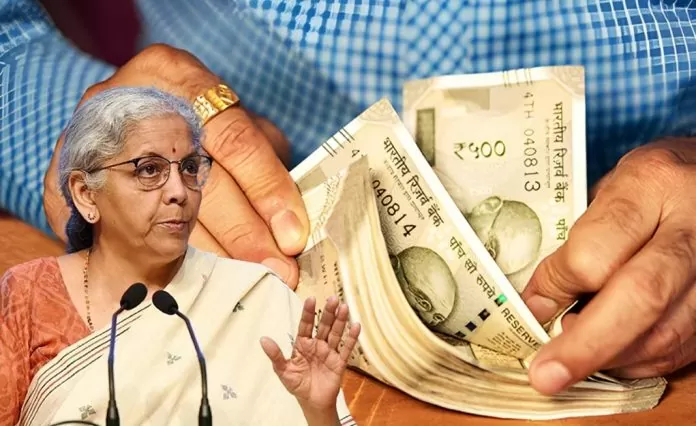
Income Tax: The first half of the financial year 2024-25 is about to end, that is, half of the financial year is about to pass and most salaried people are confused about where to invest after saving for the purpose of securing the future, so that along with saving income tax, guaranteed returns can also be obtained. The government still gives income tax exemption on select investments up to ₹ 1,50,000 under Section 80C of the Income Tax Act to taxpayers filing income tax returns under the old tax system. Therefore, broadly speaking, this is the best option for salaried people to save income tax. Let us know five such savings schemes, by investing in which you can get great returns and also save income tax.
KVP i.e. Kisan Vikas Patra
This small savings scheme run by the Indian Postal Department earns more interest than some other schemes. But the investment made in this scheme matures in 115 months, i.e. 9 years and 7 months. The minimum limit of investment in this scheme is ₹ 1,000, and there is no maximum limit. After ₹ 1,000, investment can be made in this scheme in multiples of ₹ 100. To invest in Kisan Vikas Patra, i.e. KVP, any investor has to go to the post office. According to the current rates, the amount invested in this scheme doubles in 9 years and 7 months and gives returns, because currently the central government gives interest at the rate of 7.4 percent on the investment made in this scheme.
NSC i.e. National Savings Certificate
National Savings Certificate (8th issue) operated by India Post i.e. Department of Posts is a very popular means of investment. The investment period of NSC scheme, which is counted among the small savings schemes, is five years and the minimum investment limit is also ₹ 1,000, after which the amount can be deposited in multiples of ₹ 100. There is also no maximum limit of investment in this scheme. NSC can be purchased from any post office across the country, which will mature in exactly five years. The central government is currently giving 7.7 percent interest on NSC. Every ₹ 1,000 invested in National Savings Certificate will become ₹ 1,449 on maturity after five years.
SCSS i.e. Senior Citizen Savings Scheme
Senior Citizen Savings Scheme i.e. SCSS was started for retired employees and its specialty is that the central government does not give more interest than this in any other savings scheme at present. At present, the government is giving interest at the rate of 8.2 percent on investments made in SCSS and this interest rate is applicable only in Sukanya Samriddhi Yojana. Only lump sum investment is possible in SCSS, the maximum limit of which is ₹ 30 lakh, although the minimum limit of investment in SCSS is also ₹ 1,000. The interest received in Senior Citizen Savings Scheme is calculated every quarter and given to the investor. SCSS account matures in five years, although it can be extended for three years.
SSA means Sukanya Samriddhi Yojana
Tax savings on investment, no income tax on interest and maturity amount is also completely tax free- Sukanya Samriddhi Yojana i.e. SSA is a very good scheme of the Central Government under EEE category. Only those Indian citizens are eligible to invest in this scheme whose daughter or daughters are below 10 years of age. Under Sukanya Samriddhi Yojana, an account can be opened for a maximum of two daughters (three daughters in case of twin daughters at the time of birth of the second child).
Under Sukanya Samriddhi Yojana, a maximum of ₹1,50,000 can be deposited every year, and a minimum of ₹250 must be deposited every year in the scheme account. In this scheme too, the central government is currently giving maximum interest i.e. compound interest at the rate of 8.2 percent. The maturity of the SSA account is on completion of 21 years, but the guardian has to invest in it only for 15 years. As mentioned earlier, the biggest feature of the Sukanya Samriddhi Yojana account is that it is in the EEE category, which means – along with saving income tax every year on the invested amount, no income tax has to be paid on the entire amount (investment and interest) received on maturity.
PPF means Public Provident Fund or Lok Pratinidhi
The most popular scheme run by the Postal Department is the Public Provident Fund i.e. PPF and its specialty is that like Sukanya Samriddhi Yojana, it is also in the EEE category. The maximum limit of investment in this scheme is also ₹ 1,50,000 per year. To continue the account, it is necessary to deposit a minimum of ₹ 500 every year, otherwise a penalty of ₹ 50 has to be paid every year for not investing. The central government is currently paying compound interest at the rate of 7.1 percent per annum on the amount invested in the PPF account. The PPF account matures in 15 years, but it is possible to extend the account multiple times for blocks of five years each, for which no limit has been set.
 look news india
look news india